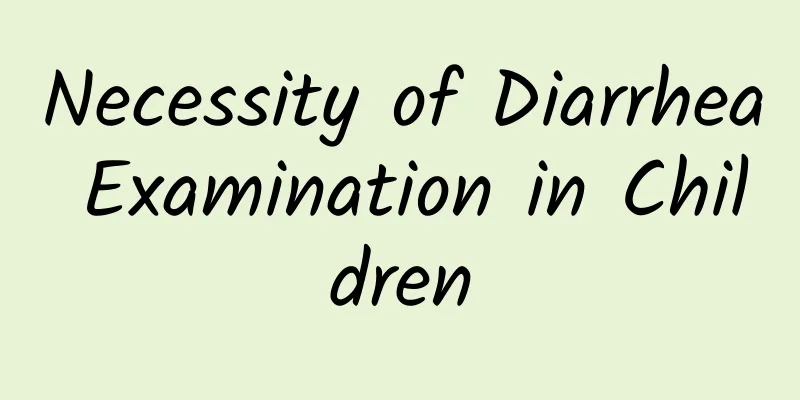Necessity of Diarrhea Examination in Children

|
Drawing blood is a necessary means to check various diseases. Doctors can make a more accurate diagnosis of the patient's condition from the various numerical analyses of the blood. If the condition of infants and young children with pediatric diarrhea is serious, parents will send their children to the hospital. Many parents have a misunderstanding that the child only has diarrhea and it is enough to check the stool, not the blood. The child is too young, and diarrhea has a great impact on his body. At this time, blood drawing is still necessary, which makes some parents have a certain resistance. Let's briefly introduce the blood test items so that parents can roughly understand the necessity of blood tests. Blood tests are usually divided into: blood routine, six blood biochemical tests, and electrocardiogram. 1. Blood leukocyte count and classification: The total leukocyte count generally does not increase in viral enteritis, but may or may not increase in bacterial enteritis. More than half of the children have increased band nuclei, with the percentage of band nuclei exceeding 10%, which is helpful for the diagnosis of bacterial infection. 2. Blood culture: It is of diagnostic significance for bacterial dysentery, Escherichia coli, Salmonella and other bacterial enteritis. Positive blood bacterial culture is helpful for diagnosis. 3. Blood biochemical examination: For children with severe diarrhea, blood pH, carbon dioxide binding capacity, bicarbonate, blood sodium, blood potassium, blood chloride, and blood osmotic pressure should be checked in time, which are of great significance for diagnosis and treatment. 4. Electrocardiogram: Patients with hypokalemia should undergo electrocardiogram examination; patients with prolonged disease course, nutritional disorders and severe symptoms of infection and poisoning should undergo X-ray and B-ultrasound examinations. Electrocardiogram examination of patients with hypokalemia shows flat T waves, bidirectional or inverted T waves and the presence of U waves. In fact, when children suffer from pediatric diarrhea, not only will some values in the stool change, but the values in the blood test analysis will also be very different. Doctors can find out the cause of the child's illness and make targeted treatment diagnoses by comparing the values of the test results with the standard values. I hope that parents and children will not be deterred from blood draws after knowing the situation, but treat it rationally so that children can get treatment faster. |
<<: How to check for diarrhea in children
>>: What aspects should be checked for diarrhea medicine in children
Recommend
Baby cough diagnosed with allergic rhinitis
If your baby is coughing and is diagnosed with al...
Can eczema in children cause fever? Generally not
Children with eczema generally do not cause fever...
What is Alkaline Phosphatase
Alkaline phosphatase is an enzyme found in multip...
What should I do if my baby has phlegm, cough and vomiting? What are the causes of phlegm, cough and vomiting in babies?
If the child has sputum, coughs, and vomiting, he...
Will calcium supplementation definitely help you grow taller? What should I do if I want to promote my baby's growth?
Calcium deficiency will affect bone development a...
The efficacy and function of pine pollen Pine pollen can resist aging
Pine pollen is a substance with great effects and...
What are the common causes of indigestion in children? What should be paid attention to in preventing indigestion in children?
Infant indigestion refers to symptoms of digestiv...
In such a situation, you should pay attention to pneumonia. What are the early symptoms of pneumonia in children?
Pediatric pneumonia is a common disease in childr...
Can severe mumps be cured?
Mumps refers to a disease caused by excessive acc...
What are the common causes of pathological jaundice?
What is pathological jaundice? What are the commo...
The difference between herpetic pharyngitis and hand, foot and mouth disease in children
The difference between herpangina and hand, foot ...
What causes jaundice? 5 causes of jaundice
Jaundice is one of the more common diseases in ne...
What is the radical cure for acute laryngitis in children?
Acute laryngitis in children often has an acute o...
What medicine is good for children's cough
Children have poor immunity, so they are prone to...
What medicine should children take for diarrhea
There are many reasons for diarrhea in children. ...









